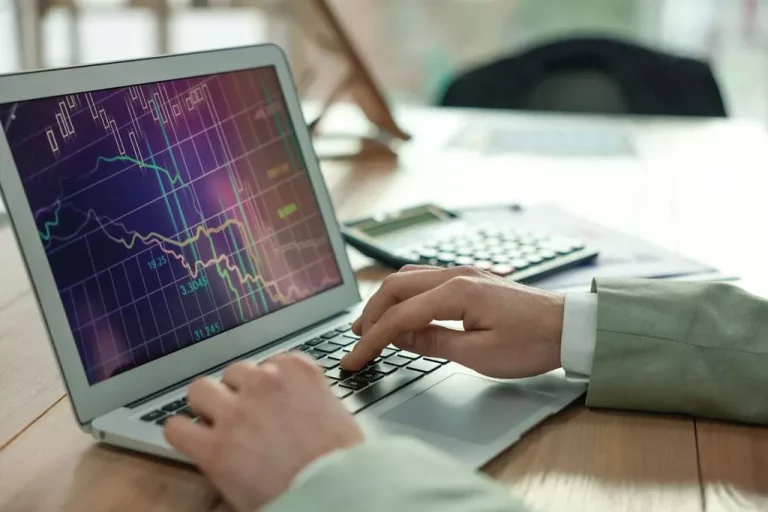FinTech
What Is Consensus In Blockchain?
Token burning is a helpful mechanism that incentivizes token holders by way of the PoB consensus mechanism. Burning crypto can even help projects management the inflation of token supply, serving to to develop the token holders. The token holders who take away their coins from the token provide gain the chance cryptocurrency bunr to validate transactions based mostly on the variety of tokens burned utilizing the PoB mechanism. Here, the validators can enhance the worth of potential rewards by burning a large quantity of tokens. Large numbers of circulating tokens are a common concern for investors who query the sustainability of a token’s future value. As a solution to this concern, crypto initiatives execute coin burning without delay or at common intervals in accordance with their burning objective.
What Is Cryptocurrency Burning?

The fastest solver receives a mining fee from the traders of those coins. However, as a outcome of there might be fewer assets and less competitors, PoB will reduce the number of miners, simply as it might cut back the token supply. Depending on the implementation, you would possibly burn local cash or cash from a special chain, like Bitcoin. In return, you’ll obtain payment within the token used because the blockchain’s primary currency. The proof-of-burn (PoB) consensus methodology allows for the burning of digital forex tokens by miners.
What Coins Are Capable Of Be Burned?
The number of megahashes that can be processed per second is called megahash per second (MH/s). A master node is a type of server current on the decentralized network and can be thought of the warehouse of the blockchain, storing the entire of the blockchain. Listing is likely certainly one of the most important steps of launching a crypto project on an change. Layer 2 is known as an overlying community that is constructed over an underlying layer 1 blockchain system. Layer 1 blockchains is the underlying blockchain infrastructure in the blockchain ecosystem.
What Does Cryptocurrency Buyback Mean?
Coupled pairs of orders called “One Cancels the Other Orders” or OCOs are positioned on crypto assets that self-execute as soon as the circumstances are fulfilled. Cross-chain in cryptocurrency is referred to the interoperability between impartial blockchain networks. Loss of faith in a selected crypto asset is called capitulation where the traders give away their positions out there which finally ends up in an unlimited promote order. A monetary quantity gained by a crypto miner during the addition of a block of transactions to a blockchain network is referred to as a block reward. If you might be new to cryptocurrencies, you must have been amused listening to about coin burn; questioning why someone must burn the coins?
Comparison With Different Consensus Mechanisms
A sidechain is a separate blockchain that’s tied to its father or mother blockchain with the assistance of a two-way peg. Critical issues similar to pace are resolved for a blockchain network using its sidechain. The giant blocks of sell orders at a particular worth give rise to what’s referred to as a promote wall within the crypto space.

Furthermore, Proof of Burn is much less generally adopted than other consensus mechanisms, which may restrict its broader acceptance and potential for widespread use. Proof of Burn (PoB) in Blockchain Development is a distinctive consensus mechanism that plays a vital role in Blockchain Technology. By intentionally destroying tokens, Proof of Burn helps in attaining community consensus and influences Blockchain Solutions.
For instance, popular memecoin Shiba Inu (SHIB) has increased its token burn to over 863% in June 2024. According to Shibburn, the entire SHIB burn tokens from its preliminary supply has crossed 410 trillion. Several cryptocurrency projects have successfully burned crypto as a part of their strategy.
How Token Buring Impacts The Crypto Price?

Additionally, Proof of Burn is more energy-efficient compared to Proof of Work, as it eliminates the necessity for intensive mining operations, thereby reducing environmental impact. The crypto miners or builders do coin burning to regulate the worth of a selected coin. Coin burning is when a certain portion of cryptocurrency is burnt to take away it from the blockchain. There are numerous resources obtainable that may assist you to monitor how a lot of a particular coin is being burned. Some crypto providers will publicly list how much of their native token is being burned on their website.
Bitcoin – inflationary however the supply is fixed (21 million) which suggests there can never be extra bitcoins than 21 million. To summarize, provide metrics can be utilized in conjunction with inflation (MC/FDMC) to find out the quality of the tokenomics. Frameworks (defined metrics) can be used to gauge whether a selected token’s economics can lead to its success. Success can be outlined as continued increase within the price of the token over the years. Let’s look at the provision metrics that shall be useful for making a simple yet highly effective framework.
The process of coin burning supplies a natural safeguard in opposition to Distributed Denial of Service Attacks in addition to congestion on the community because of spam transactions. The reduction in volume thereby reduces the chances of a spam assault, leaving more space for “healthy” transactions to happen. When frozen, the property are sent to a selected tackle where they get blocked with a private key. When burned, the property are also despatched to a special pockets, however the private key to the pockets is destroyed. If you look at crypto financial techniques, they’ve completely different coin creation and delivery mechanisms.
Burning cash involves taking them out of circulation and destroying them endlessly, permanently reducing the obtainable supply of that token. The precise causes for doing this will vary, from platforms that essentially program coin burns into their protocol, to crypto developers that simply wish to see a worth bump. Some coins like Counterparty implement a POB algorithm that requires burning the currency of Bitcoin in trade for the same amount of cash in the native currency, XCP. During Counterparty’s ICO, fascinated investors had to send their Bitcoins into an eater address for destruction, in trade for XCP cash. This method, the newly created XCP tokens had value as a outcome of the same number of Bitcoin was destroyed to create it. There are coins that employ a Proof-of-Burn consensus mechanism, which requires miners to level out verifiable proof on the blockchain that they have burnt a portion of their cash.
Token burning is a method that includes the permanent removal of tokens or coins from circulation by sending them to an irretrievable tackle, thereby reducing the whole provide. Token burns could be seen as a form of market manipulation, as they immediately influence the supply and, probably, the worth of a cryptocurrency. Critics argue that burns can create synthetic shortage and may not always replicate the true worth or utility of the token. Furthermore, insiders conscious of token burns earlier than public disclosure might disproportionately profit.
- Additionally, it permits miners to continue mining new coins, as some cryptocurrencies require them to burn cash initially to mine new blocks.
- As decentralized finance (DeFi) protocols continue to realize recognition, extra projects are burning their cash.
- The benefits within the case of traders are trade safety and faster transactions.
- Any crypto dealer or miner throughout the globe can participate in a consensus mechanism.
- This process is used to verify the credibility of a buyer and keep away from any fraudulent or illegal activity.
By exploring Proof of Burn, Blockchain Enthusiasts, Developers, and Investors can gain priceless insights into its applications and potential. For skilled guidance and customised Blockchain Solutions, contemplate partnering with Nadcab Labs to leverage the complete potential of Proof of Burn in your initiatives. The destruction of tokens might be perceived as wasteful, representing a loss of value compared to different consensus mechanisms that don’t involve token destruction. Security considerations additionally come up, as Proof of Burn may not present the same stage of safety as Proof of Work or Proof of Stake, resulting in debates about its robustness.
Read more about https://www.xcritical.in/ here.